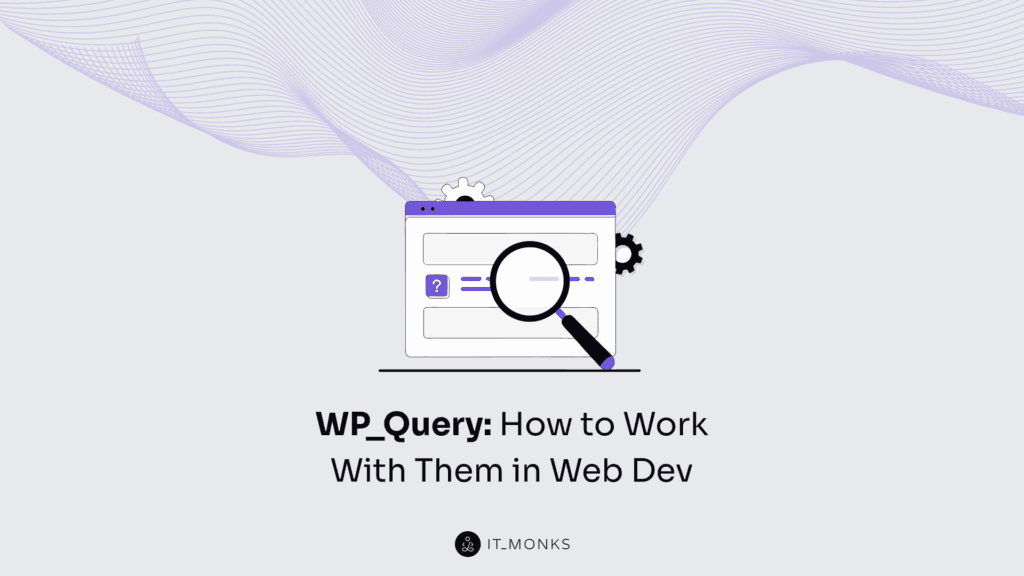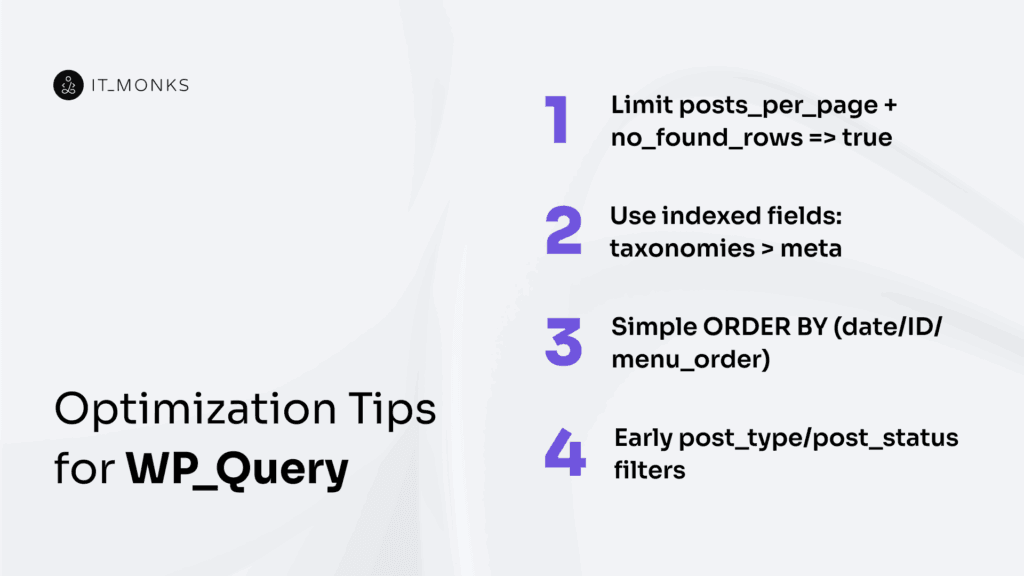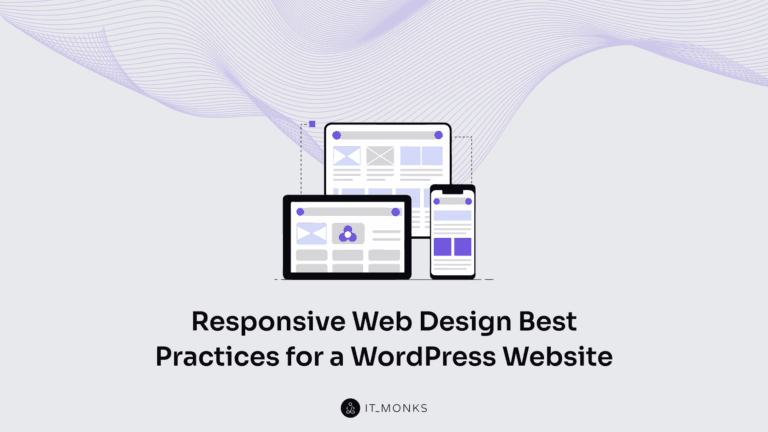WP_Query: How to Work With Them in Web Dev
Table of Contents

WP_Query is the WordPress query class that defines how a WordPress website retrieves and structures content. It operates as the interface between WordPress and its database abstraction layer, converting query variables into structured data queries that determine which posts, pages, or custom post types appear on the frontend.
In WordPress development, WP_Query controls the flow of data from backend logic to template rendering. It retrieves post objects filtered by post type, taxonomy, metadata, order, and pagination parameters, then delivers them to template files for dynamic content rendering. This process ensures that every loop execution is predictable, consistent, and aligned with WordPress’s content model.
The WordPress content loop and template hierarchy depend on WP_Query to execute correctly. It initializes the data set templates, enabling modular, scalable content presentation across archives, search results, and custom views.
For developers, WP_Query is a core component of theme architecture. It enables precise query customization, filtered data retrieval, and structured output, providing the backend control necessary for efficient frontend rendering and consistent content delivery across the entire WordPress environment.
What Is WP_Query?
WP_Query is an object-oriented PHP class in the WordPress core that defines how content is retrieved from the database. It serves as the primary query class that builds structured requests to the WordPress database layer, operating on the wp_posts table and joining related post metadata when needed.
As part of the internal query framework, WP_Query structures database interactions executed within the query lifecycle to determine which post objects, such as posts, pages, or custom post types, are returned to the application for rendering through the loop. It forms the base of the content retrieval process and allows secondary or custom loops through independent query instances.
By instantiating the WP_Query class with an array of query parameters, including post type, taxonomy, author, category, and post status, WP_Query converts these arguments into a parameterized query string that is processed by the WordPress database abstraction layer. This ensures consistent post retrieval within the WordPress environment and alignment with the main query and content loop.
WP_Query governs how content is queried and structured before rendering, defining the scope of post retrieval that feeds the loop and template system. It standardizes database-level results into reusable query objects that operate across themes and template contexts.
How Does WP_Query Function?
WP_Query functions by processing an argument array, parsing query variables, and generating an SQL statement that retrieves post objects through the WordPress database layer.
At instantiation, WP_Query evaluates each argument, such as post type, taxonomy, author, and pagination, and maps them into internal query variables. It parses these variables through the parse_query() method, linking argument keys to database fields and defining SQL conditions.
WP_Query then builds and executes the SQL query through the database abstraction layer, returning a filtered result set of post objects. Using get_posts(), it transforms the data into complete post objects and updates the query object’s internal state.
These objects are exposed to the Loop for iteration in the defined order and within the defined limits. Throughout execution, WP_Query updates properties such as post_count and found_posts, and may replace the global query object when acting as the main query.
This sequence, from parsing to SQL execution and loop exposure, defines WP_Query’s operational flow in the WordPress query system.
Where is WP_Query Used?
WP_Query is used across WordPress’s structural layers to retrieve and display post data via dynamic database queries. It operates inside theme templates such as home.php, archive.php, and single.php, controlling loop execution and determining which posts appear on the front end.
It is implemented in custom page templates and functions.php to run page-level custom queries that extend the default query context. Within plugins, WP_Query executes during initialization or rendering hooks to handle content filtering and inject custom post lists into widgets, shortcodes, or block callbacks.
It also runs in dynamic content environments, such as AJAX handlers and REST API integrations, for asynchronous data loading and pagination.
In shortcode logic, taxonomy templates, and archive templates, WP_Query generates contextual post collections based on category, tag, or custom taxonomy parameters.
Why Use WP_Query in WordPress Projects?

WP_Query provides a structured, reusable way to retrieve post data in WordPress projects. It acts as the core query abstraction layer required for consistent, scalable, and non-destructive database access.
It defines parameters for post type, taxonomy, meta field, or author, enabling targeted and context-aware queries within templates or plugins. By governing the loop and integrating with template logic, WP_Query ensures reliable data flow across themes, REST endpoints, and plugin modules.
In production environments, it forms the architectural foundation for modular content control, advanced filtering, and efficient, semantically structured data retrieval across the WordPress architecture.
What Problems Does WP_Query Solve?
WP_Query addresses the architectural limitations of the default WordPress query by isolating the query scope and enabling parameter-based control over post retrieval.
It eliminates main query interference through independent query objects, ensuring full loop isolation. WP_Query corrects the lack of advanced filtering by using meta_query and tax_query arrays for conditional retrieval, taxonomy mapping, and meta field targeting.
WP_Query defines explicit query scope for each dataset to prevent pagination and segmentation conflicts, and maintains internal pointers to avoid variable overwrites. It provides structured query control, loop isolation, and conditional filtering essential for reliable WordPress development.
When is WP_Query Better Than get_posts()?
WP_Query is better than get_posts() when a WordPress project needs a persistent query object with loop compatibility, pagination control, and scoped query logic.
While get_posts() only returns an array of post objects without maintaining query state or pagination data, WP_Query creates a full query object that tracks global and local context, integrates with the Loop, and keeps post data in sync during template execution.
In custom loops, secondary queries, or dynamic content retrieval, WP_Query outperforms get_posts() by preserving query state and keeping variables like $post, $wp_query, and $paged consistent with the output. It is required when developers must manipulate the global query object or define isolated, reusable query instances for complex layouts.
WP_Query also supports filtered taxonomy queries and prevents pagination conflicts that occur when get_posts() fails to update the global context.
Therefore, WP_Query is the correct choice whenever a WordPress site requires structured content retrieval, full loop integration, and controlled query state management.
How to Use WP_Query: Core Syntax?
WP_Query is used in WordPress by instantiating a PHP class with a parameter array that defines how posts are retrieved from the database.
The class accepts an associative array of query arguments, such as post type, taxonomy, or pagination, to configure query logic. When executed, it returns a query object representing the request state and exposing post objects pulled from the WordPress database.
This object passes its post data to Loop for iteration and rendering. WP_Query thereby provides an object-oriented structure for creating reusable, self-contained post queries in themes and plugins.
What is the Basic Structure of a WP_Query?
WP_Query follows a basic structure built on class instantiation with defined parameters, forming the foundation for custom queries in WordPress. It starts with calling new WP_Query() and passing an associative array of query arguments that specify which posts to retrieve.
The class then returns a query object, which is a structured PHP object containing WordPress posts that match those conditions:
$args = array(
'post_type' => 'post',
'posts_per_page' => 5
);
$query = new WP_Query( $args );
Here, $args defines the parameter array, new WP_Query() instantiates the class with those arguments, and $query stores the result object used in Loop. This syntax provides a clear, reusable structure for querying post data across templates and plugins.
What’s Needed to Loop Through Posts?
A post loop requires a valid WP_Query object and an iteration structure that checks for available posts and loads their data for access. The loop runs only when the query returns results, and the object controls post-retrieval behavior through its internal methods.
A custom loop checks for posts using have_posts() and processes each item with the_post(), both executed on the query instance to manage iteration and prepare post data.
if ( $query->have_posts() ) {
while ( $query->have_posts() ) {
$query->the_post();
// Use template tags like the_title(), the_content(), etc.
}
wp_reset_postdata();
}This structure checks for posts, iterates through results, sets up post data, and resets the global state when complete. The WP_Query object drives each step, where have_posts() controls loop flow, the_post() exposes the current post, and wp_reset_postdata() restores context for later operations.
Key WP_Query Parameters
WP_Query parameters are associative key-value pairs that define how WordPress retrieves, filters, and orders content from the database. Each key-value pair, typically a string, array, or boolean, defines a condition that shapes the query and its result.
At its core, WP_Query groups parameters by function. Content type parameters, such as post_type and post_status, scope the query to specific content types (posts, pages, or custom post types) and control post visibility by publication state (publish, draft, or private).
Filtering parameters refine the query result set. Taxonomy-based arguments like category_name, tag, or tax_query limit output to defined taxonomies, while meta_key, meta_value, and meta_query filter posts by custom field data. These parameters act as attribute-value constraints, determining which post objects match the query logic.
Ordering parameters, such as orderby and order, determine the result sequence; orderby defines the attribute used for sorting (date, title, or meta field), and order specifies direction (ASC or DESC).
Pagination parameters, such as posts_per_page, paged, and offset, control how results are distributed across pages and where retrieval begins, defining the flow of post objects within template loops.
During query execution, WP_Query compiles these settings into a structured SQL statement and returns a result object containing post data that meets the defined conditions.
This parameter-driven logic makes WP_Query the core mechanism for content scoping, filtering, and result shaping in dynamic WordPress templates.
WP_Query Use Cases in Custom Development
How to Load Featured Posts on the Homepage?
To load featured posts on the homepage, WP_Query should run with a meta query that filters posts where the custom field is_featured = 1. The query runs inside front-page.php or the homepage template, separate from the main query, to retrieve only featured content.
A featured post is defined by a meta key (is_featured) with a value of 1. The query parameters specify the content scope: post_type defines the object type, posts_per_page limits results, and meta_key and meta_value filter posts to those marked as featured.
$args = array(
'post_type' => 'post',
'posts_per_page' => 3,
'meta_key' => 'is_featured',
'meta_value' => '1'
);
$featured_query = new WP_Query( $args );
if ( $featured_query->have_posts() ) {
while ( $featured_query->have_posts() ) {
$featured_query->the_post();
// Display post data (e.g., the_title(), the_excerpt())
}
wp_reset_postdata();
}$args defines the query parameters for featured posts. WP_Query executes the retrieval, have_posts() and the_post() run the loop, and wp_reset_postdata() restores the global post object. This setup isolates featured post loading within the homepage template, ensuring conditional content selection and stable query scope.
How to Filter CPTs by Taxonomy?
To filter custom post types (CPTs) by taxonomy, use WP_Query with the tax_query parameter inside your template or function. The query targets posts of a defined post_type and limits results to a specific taxonomy term or slug. The query parameters specify the content type, limit the number of results, and apply the featured flag filter.
$args = array(
'post_type' => 'post',
'posts_per_page' => 3,
'meta_key' => 'is_featured',
'meta_value' => '1'
);
$featured_query = new WP_Query( $args );
if ( $featured_query->have_posts() ) {
while ( $featured_query->have_posts() ) {
$featured_query->the_post();
// Display post data (e.g., the_title(), the_excerpt())
}
wp_reset_postdata();
}Here, $args defines the query parameters controlling post retrieval. WP_Query executes the custom query in front-page.php to load only the filtered posts.
Loops such as have_posts() and the_post() iterate over the result set for output. wp_reset_postdata() restores the global post object, keeping the main query context intact and ensuring conditional content remains scoped to the homepage.
How to Paginate Custom Loops?
To paginate custom loops, WP_Query uses the paged and posts_per_page parameters to divide results into sequential pages. In a template, the current page number is retrieved with get_query_var(‘paged’) and passed into the query to calculate the correct offset.
$paged = get_query_var( 'paged' ) ? get_query_var( 'paged' ) : 1;
$args = array(
'post_type' => 'post',
'posts_per_page' => 5,
'paged' => $paged
);
$custom_query = new WP_Query( $args );
if ( $custom_query->have_posts() ) {
while ( $custom_query->have_posts() ) {
$custom_query->the_post();
// Display post data
}
echo paginate_links( array(
'total' => $custom_query->max_num_pages
) );
wp_reset_postdata();
}Here, the query variable (paged) retrieves the current page number; posts_per_page limits the results per page; the paged parameter applies the proper offset; the loop renders page-specific posts; and paginate_links() generates navigation based on the same query object.
wp_reset_postdata() restores the global state to keep the template context accurate. Pagination works only when the paged value and pagination controls reference the same WP_Query instance.
Common Pitfalls and Optimization Tips
What Mistakes to Avoid with WP_Query?
WP_Query fails when misconfigured, overused, or not reset, resulting in performance issues, loop errors, and unreliable output.
Parameter mismatches break query scope and pagination; conflicts in taxonomy or missing paged values return inaccurate results.
Omitting wp_reset_postdata() corrupts the global post object, leaking data and causing conditionals to misfire.
Overusing WP_Query when get_posts() suffices adds query overhead and memory bloat.
Nested queries without scope isolation corrupt the parent loop and disrupt pagination.
Heavy meta_query or tax_query conditions force full-table scans, degrading speed and reliability.
How to Make Queries Faster?

WP_Query executes faster when its SQL targets indexed fields, limits result sets, and avoids complex joins. It slows when unindexed meta fields or broad filters expand the query scope and database load.
Each parameter maps to an SQL clause that defines the query payload and result subset. Limiting posts_per_page and using no_found_rows => true reduces memory and execution time, while pagination counting increases cost.
Taxonomy filters run faster than meta queries because taxonomy tables are indexed; each meta_query join adds unindexed overhead unless meta keys are indexed. Simple ORDER BY rules on date, ID, or menu_order let MySQL use indexes, while early post_type and post_status constraints narrow the scan range.
Front-end queries must be efficient because they run on every page load. Fast WP_Query operations rely on indexed filters, limited scope, and small result sets that minimize execution time and database stress.
WP_Query and SEO/UX Considerations
How does WP_Query improve UX?
WP_Query improves user experience by structuring content delivery through scoped, filtered queries that show only relevant posts for each page context on WordPress front-end.
It defines content scope per template, such as featured posts on the homepage or taxonomy-limited archives, so users see only context-matched results. This control filters irrelevant data, maintains semantic consistency, and improves discoverability.
WP_Query structures the user interface by turning query results into coherent content output. Each scoped loop creates predictable page sections where post visibility and layout relevance align with user intent. Semantic output reinforces navigational clarity, helping users move through logically ordered content with minimal clutter.
By restricting query results, WP_Query reduces load time and cognitive effort. Filtered sections display only necessary data, improving responsiveness and clarity.
In effect, query logic defines the site’s UX architecture, where content scope, semantic structure, and filtering precision translate directly into a cleaner, more relevant interface.
Can WP_Query Support Content Silos?
WP_Query enforces content silos by restricting post retrieval through taxonomy filters, post type parameters, and scoped loops that preserve topic boundaries within a WordPress site.
A content silo represents a defined content domain, such as a category, taxonomy term, or custom post type, in which posts remain isolated within their semantic boundaries. WP_Query maintains this isolation by limiting result sets to matching taxonomies or post types, ensuring query exclusivity and controlled visibility across site sections.
Using arguments such as post_type, tax_query, and category_name, it defines a taxonomy scope that filters posts to a single topical group while excluding unrelated content via post_not_in or complementary taxonomy rules.
Each taxonomy or category archive operates as a siloed structure with its own query filter and scoped result set. Developers can extend this logic or automate silo behavior using WordPress hooks, enabling custom filters or actions to dynamically adjust query parameters while preserving silo integrity.
Through this isolation, WP_Query structures topic-aligned sections, prevents cross-domain content overlap, and upholds semantic integrity within WordPress’s siloed architecture.
Debugging and Best Practices
How to Inspect the Generated SQL?
To inspect the generated SQL, WP_Query provides the final query string through the $query->request property. This property contains the complete SQL statement executed against the database after all parameters and filters are applied.
When a query runs, WP_Query builds the raw SQL defining its SELECT, WHERE, JOIN, and LIMIT clauses. Developers can read this value to analyze how query arguments are translated into SQL conditions and joins.
$args = array(
'post_type' => 'post',
'category_name' => 'news'
);
$query = new WP_Query( $args );
echo $query->request;
$query->request outputs the complete SQL string, showing how parameters map to WHERE clauses and JOIN logic. This debug output helps identify redundant joins, missing limits, or unexpected query expansion.
The SQL representation reflects the post-filter query, meaning all hooks and pre_get_posts modifications have already run. It can be copied into a database client (like phpMyAdmin) to verify results or analyze performance.
In a WordPress developer environment, this inspection is essential for diagnosing query behavior and validating database performance. Use this inspection only in development or staging environments, since exposing raw SQL can reveal internal data.
For extended diagnostics, tools like Query Monitor or SAVEQUERIES can assist, but $query->request remains the main method for precise query-level debugging.
What are the Best Practices for WP_Query?
WP_Query best practices enforce scoped execution, minimal parameters, and mandatory postdata resets. Each query runs in its own context, defines only needed arguments, and calls wp_reset_postdata() to preserve $post integrity. Unreset postdata corrupts the global loop and disrupts execution.
WP_Query must stay isolated from the main query. Nested queries add SQL load, memory cost, and overhead; use only when isolation is required.
Explicit parameters, such as posts_per_page, paged, and orderby, ensure pagination stability. Non-paginated queries require no_found_rows => true to cut database cost. Use get_posts() or get_pages() instead of WP_Query for static retrieval.
Each argument set must stay minimal and map directly to SQL for precise result sets. Any missing reset, vague parameter, or nested call breaks query integrity and widens performance boundaries.
Following WordPress coding standards ensures that queries remain predictable, efficient, and maintainable. Any missing reset, vague parameter, or nested call can break query integrity and degrade performance.
Alternatives and Compatibility
What are Valid Alternatives to WP_Query?
WordPress provides several valid alternatives to WP_Query, each serving as a scoped function for specific content retrieval cases where simplified execution or limited data access is sufficient.
get_posts() retrieves post collections through a lightweight operation that bypasses pagination and full query behavior. It returns basic post objects for non-paginated fetches or internal lookups, suitable for backend data access rather than public loops.
get_post() and get_page_by_path() return single post objects by ID, slug, or path. These scoped query functions handle single-item retrieval without loading the global query, making them efficient for static or template-bound content.
query_posts() overrides the global query, replacing the main loop parameters in place. This query override can cause a main loop conflict, so it should only be used in isolated templates where full query replacement is intentional.
For raw SQL control, $wpdb executes direct queries against the database, bypassing abstractions for precise retrieval logic. Its execution constraints require manual sanitization since it skips WordPress’s preparation layers.
These alternatives enable scoped queries or simplified retrieval within defined execution constraints. They provide partial query replacement options, but WP_Query remains the most flexible and complete method for paginated and parameterized data access in WordPress.
Is WP_Query Compatible With Page Builders?
WP_Query is compatible with page builders that allow PHP-based query injection or shortcode logic in their rendering pipeline. It executes within builder templates that support custom query control, loop logic, and dynamic content injection via hooks or shortcodes.
Most builders already use WP_Query for dynamic content so that custom loops can run via shortcodes or template injection. Conflicts arise when the builder overrides the main query or isolates the output buffer, breaking pagination or loop access.
When scoped within the builder’s compatibility mode, WP_Query maintains pagination flow, preserves output integrity, and renders query results. It remains structurally compatible with the builder if the builder supports logical loop execution and shortcode-based rendering.
Contact
Don't like forms?
Shoot us an email at [email protected]

Send a Project Brief
You need to load content from reCAPTCHA to submit the form. Please note that doing so will share data with third-party providers.
More InformationYou are currently viewing a placeholder content from Turnstile. To access the actual content, click the button below. Please note that doing so will share data with third-party providers.
More InformationYou are currently viewing a placeholder content from Facebook. To access the actual content, click the button below. Please note that doing so will share data with third-party providers.
More InformationYou are currently viewing a placeholder content from Instagram. To access the actual content, click the button below. Please note that doing so will share data with third-party providers.
More InformationYou are currently viewing a placeholder content from X. To access the actual content, click the button below. Please note that doing so will share data with third-party providers.
More Information


